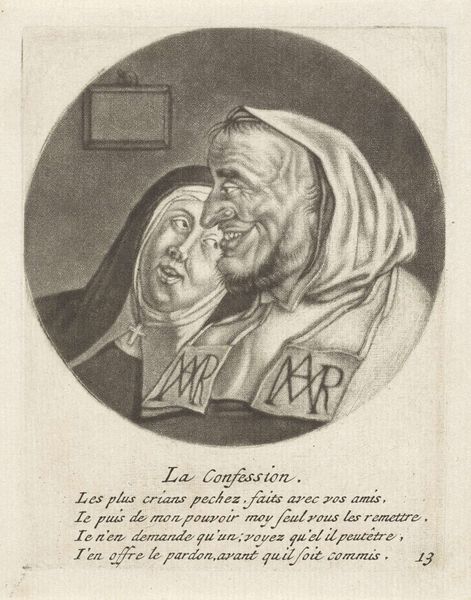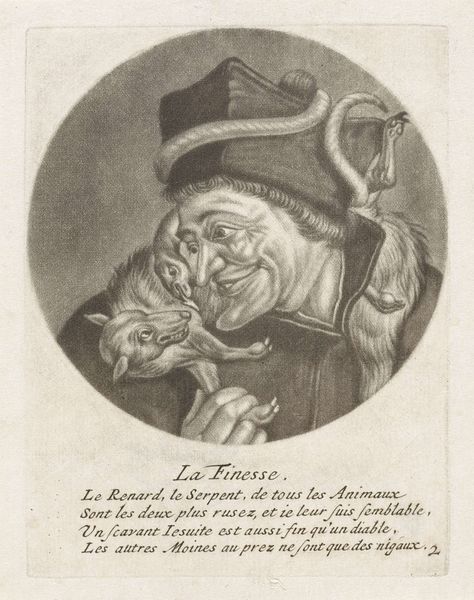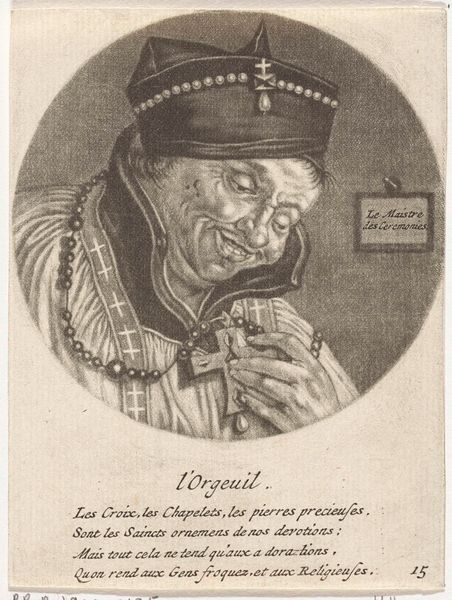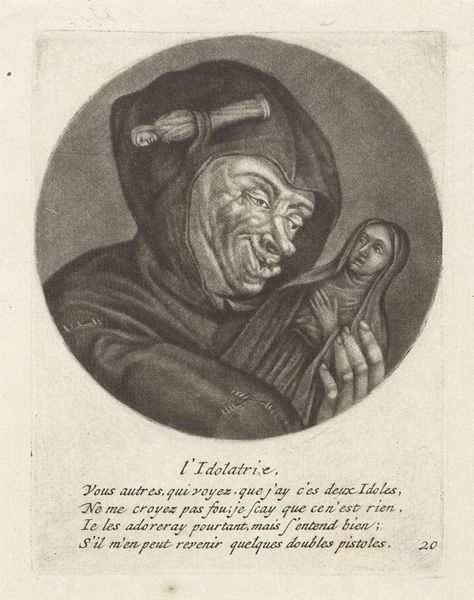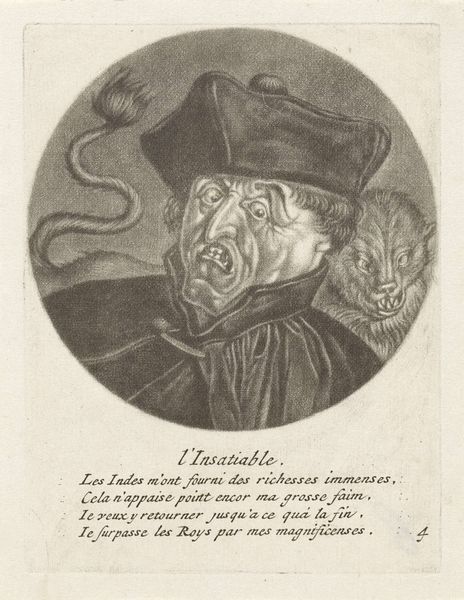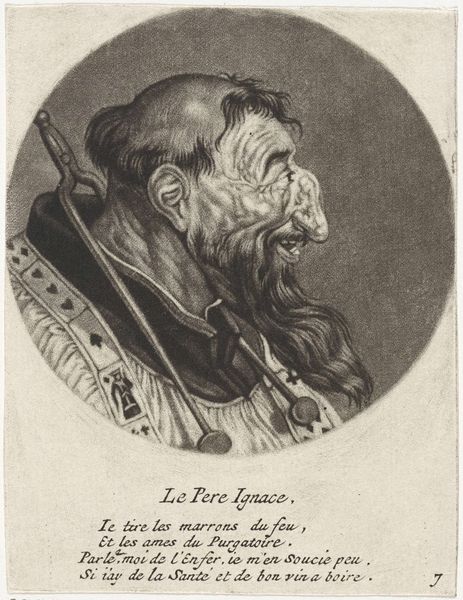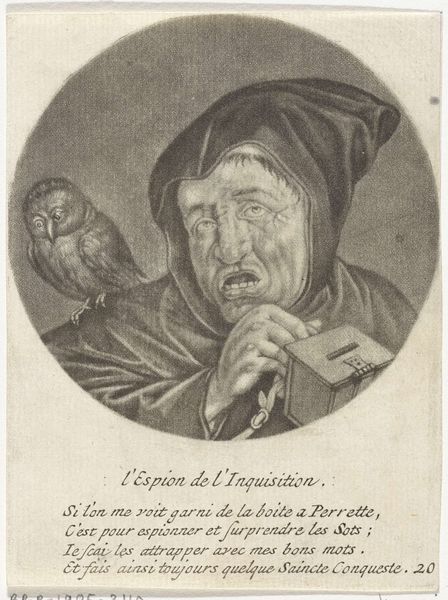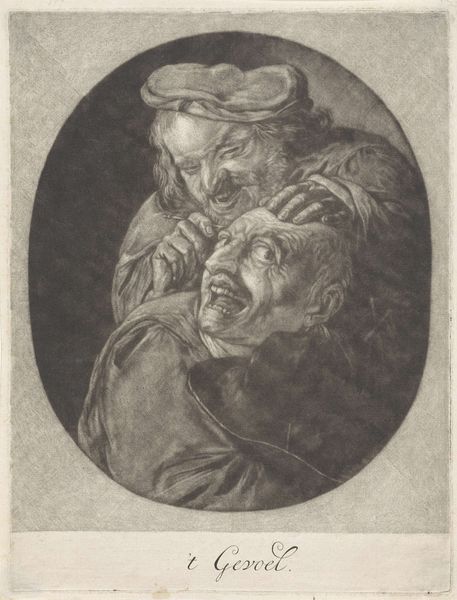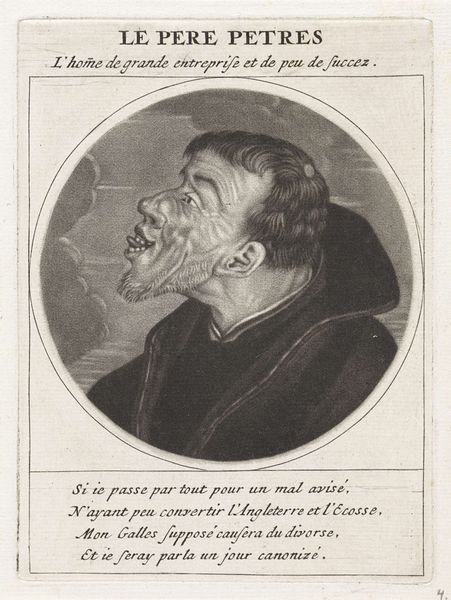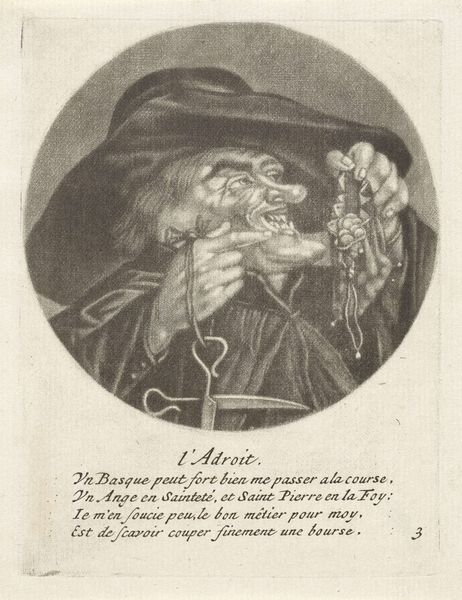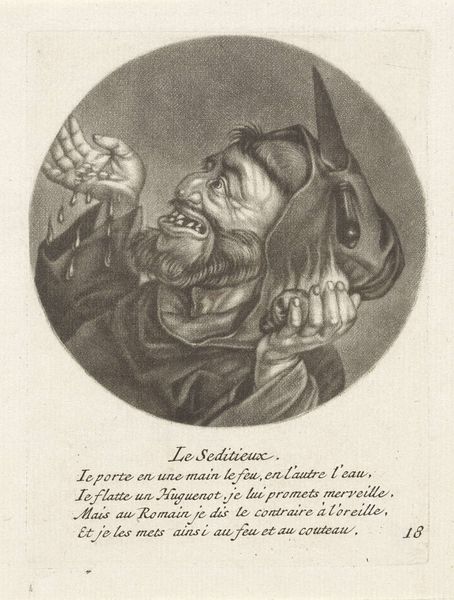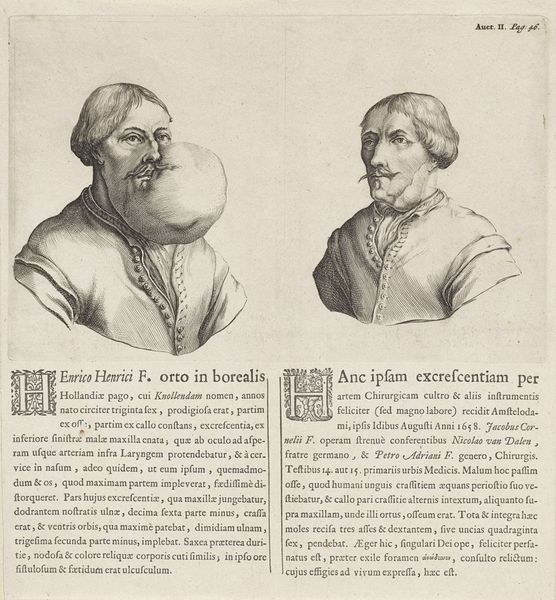
engraving
#
portrait
#
narrative-art
#
baroque
#
old engraving style
#
history-painting
#
engraving
Dimensions: height 115 mm, width 90 mm
Copyright: Rijks Museum: Open Domain
This is Jacob Gole’s diminutive engraving, "Monnik en een huilende man," likely from the late 17th or early 18th century. The stark composition is immediately striking, enclosed within a circle that intensifies the claustrophobia of the scene. Note how Gole uses contrasting textures to amplify the drama. The coarse lines defining the monk’s face create a grotesque visage, while the smoother shading on the weeping man emphasizes his vulnerability. The circular format serves as a symbolic frame, highlighting the power dynamic between the figures. This contrast isn’t merely aesthetic. It reflects a deeper structural opposition – the oppressor versus the oppressed. The text below translates roughly to the monk demanding silence on a mystery, threatening further torment. It’s a power struggle, framed by Gole’s deliberate formal choices, that speaks to broader questions of authority and submission. Ultimately, the engraving’s power resides in its ability to provoke ongoing reflection on the nature of human relations.
Comments
No comments
Be the first to comment and join the conversation on the ultimate creative platform.
